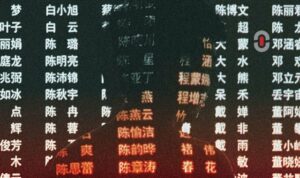In medical terms in the English language, the term “cold” and “cold temperature” do not always mean the same thing. For example, although “cold” can mean “cold temperature”, it can also be associated with negative physical symptoms such as coughing and sneezing, headaches, and a variety of others.
To address this potentially confusing situation, the UMLS medical system or unified medical language system/UMLS was developed in the 1980s. The brainchild of Donald A.B. Lindberg, it is in extensive use today. But if you’re wondering what the unified medical language system/UMLS is and what it’s challenges are in terms of Chinese medical translation, keep reading to find out more.
What is the UMLS?
Developed by the National Institutes of Health, the unified medical language system/UMLS is a “set of files and software that aggregates more than 200 health and biomedical vocabularies and standards to enable interoperability between systems”. What this means in practice is that medical professionals are involved in the process, who use lexical analysis tools, to give the same meaning from different vocabularies and then link them. However, there is a challenge with all this.
And that lies in the fact that most medical terms are in English (70.8%), followed by Spanish (10%), French (2.7%), and other languages such as Hebrew. For Chinese medical, the percentage is miniscule despite the size and influence of the country. What’s more is that only simplified Chinese has been included in the unified medical language system/UMLS, posing even further challenges.
What is the importance and main goal of having a Unified Medical Language System – UMLS?
The primary purpose and main goal of the unified medical language system/UMLS is to facilitate medical terminology normalization and interoperability. Although this may sound simple enough, it is a complicated task, especially in the context of Chinese medical translations.
What are some of the translation challenges for Chinese?
With the limited dataset or corpus for Chinese, the unified medical language system/UMLS still has a long way to go. In addition, there are some important linguistic differences with Chinese and English (as well as other Latin-based languages), which create challenges that need to be overcome for the system to operate as effectively and efficiently as possible. Here are just a few of them that have been identified.

- Chinese is a type of logographic writing system: first of all, Chinese is a type of logographic writing system. This means that one symbol can represent an entire word with no adequate guidance as to its pronunciation. Although Chinese is not the only language to have this type of writing system, its complex nature poses challenges for inputting these word representations through symbols in computers and attempting to ensure an accurate translation.
- Lack of well-developed terminology systems: as mentioned earlier, there is a difference between having a “cold” and having a “cold temperature”. In Chinese, this problem is compounded because there is a lack of well-developed terminology system. The country is so vast in size, there are so many dialects and language groups, there is traditional and modern medicine with each of their variations and specificities, and Chinese itself can be written and spoken as simplified or traditional. Therefore, this lack of uniformity and cohesiveness can pose challenges to the “unified” nature of the unified medical language system/UMLS.
- Mapping strategies: furthermore, when it comes to mapping strategies or using computers to input medical language data, there are a variety of techniques, strategies, and methods that can be used. Five authors who tested this studied the outcomes of string, semantic, and string and semantic strategies only to discover that each one produces different results and outputs.
- Diversity of Chinese medical entities: finally, the great diversity of Chinese medical entities poses an incredible challenge for the unified medical language system/UMLS because there is so much internal diversity that coming to a unified conclusion and reaching agreement on one term can be a long, laborious, and arduous process.
Concluding remarks
Although the unified medical language system/UMLS has an incredibly noble goal in mind, this goal will face challenges when it comes to the China writing system in the context of reaching agreement in respect of medical terminology.
Despite this, with the right combination of human skills, experience, and knowledge and computer aided programs that help machines learn better, the unified medical language system/UMLS can be further developed and refined for greater accuracy and improved results.
This will not only have a positive impact on medical practitioners all over the world, but on patients and their health and well-being.
